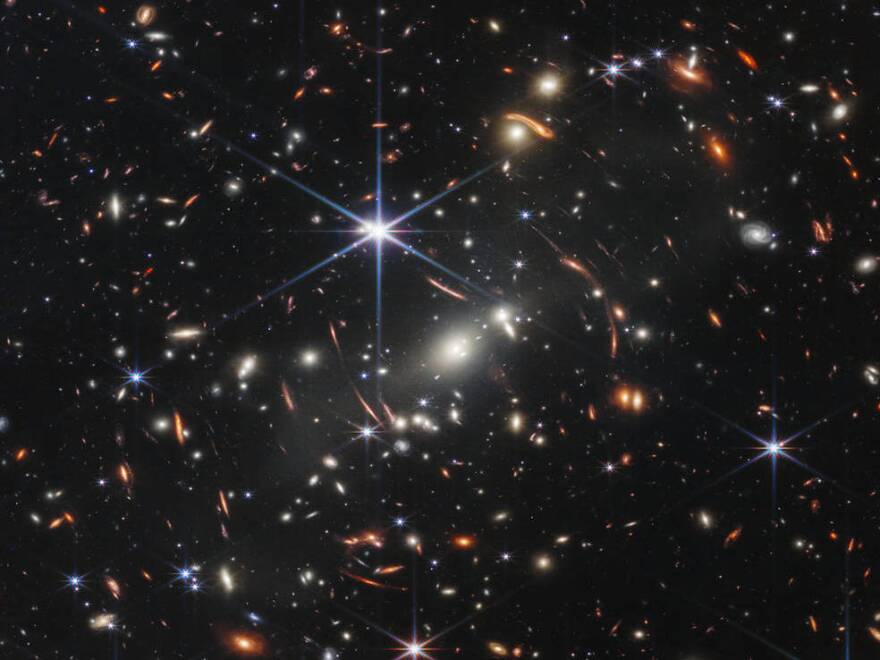A new frontier in science came into human view yesterday when NASA released the first five images from the James Webb Space Telescope. A successor to the Hubble Telescope, launched into space in 1990, the Webb launched in December and its stunning images show us farther reaches of space than have ever been glimpsed by humans before.
The most notable image in the collection, known as Webb’s First Deep Field, is a composite image showing thousands of galaxies and the deepest parts of the universe that have ever been captured.
Andy Veh, a professor of astronomy at Kenai Peninsula College, spoke with KDLL about that image and how it was captured.
When you look at the Webb Space Telescope’s composite photo of the universe, you may be drawn to a large, bright star in the upper left quadrant. However, Veh explained that this star is more of a hindrance to astronomers.
“The astronomers who are looking at this picture don’t like this star,” he said.
Why not? Because that star is a part of our own galaxy, the Milky Way. Scientists with NASA hope to use the Webb Telescope to look far beyond.
“In order to look into the universe, we have to peek out of our own Milky Way galaxy. But they want to look not just a hundred thousand light years, not even a million. No, they want to look a billion light years into the universe and farther,” he explained.
The area captured in Webb’s First Deep Field is described by NASA as, “approximately the size of a grain of sand held at arm’s length by someone on the ground.” Veh described it as the tip of a needle. This particular image required a 12-and-a-half hour exposure to capture an area so far away and so faint.
The Webb’s predecessor, the Hubble Telescope, is just a few hundred miles from Earth.
But the Webb uses infrared technology and needs to be far from Earth so it’s not disturbed by the heat radiating from Earth into space. It’s one million miles away — which poses a few problems.
“Putting it a million miles away means several things. One of them is you can never maintain it. With the Hubble Space Telescope, there were several shuttle space missions that were able to install something, or tighten a loose screw,” Veh said. “Here, with the Webb, you can’t. No one has ever flown a million miles.”
The image also demonstrates the origin of something much more earthly, Veh said: the classic star shape. Veh explains that stars are round, just like the sun. But the telescope technology creates certain stress point patterns that show up in images, creating the classic, uniform star spokes that are replicated in the way that people usually draw the shape.
Still, NASA hopes to use the Webb Telescope to study and understand the furthest reaches of space over the next decade. And Veh said this week’s photos from the Webb are just the beginning.
“I think the first images were just to show the beauty of the universe and to see that the Webb telescope in fact is working — and apparently it is. And now the real research starts,” he said.
More images will soon be available, hopefully to feed the scientific community with more opportunities for cosmic research.






